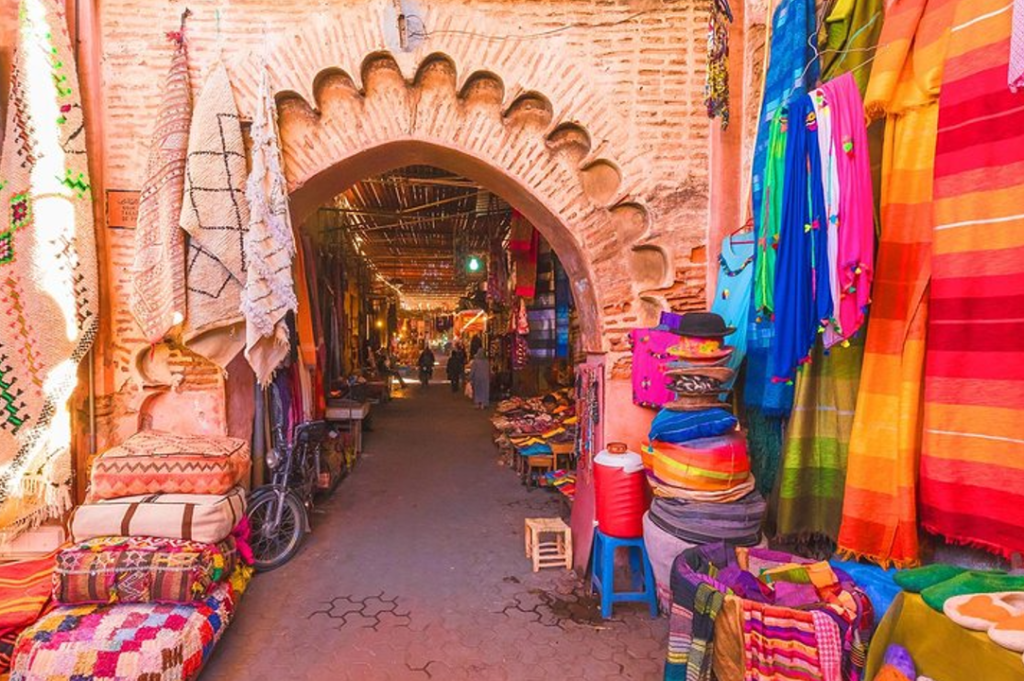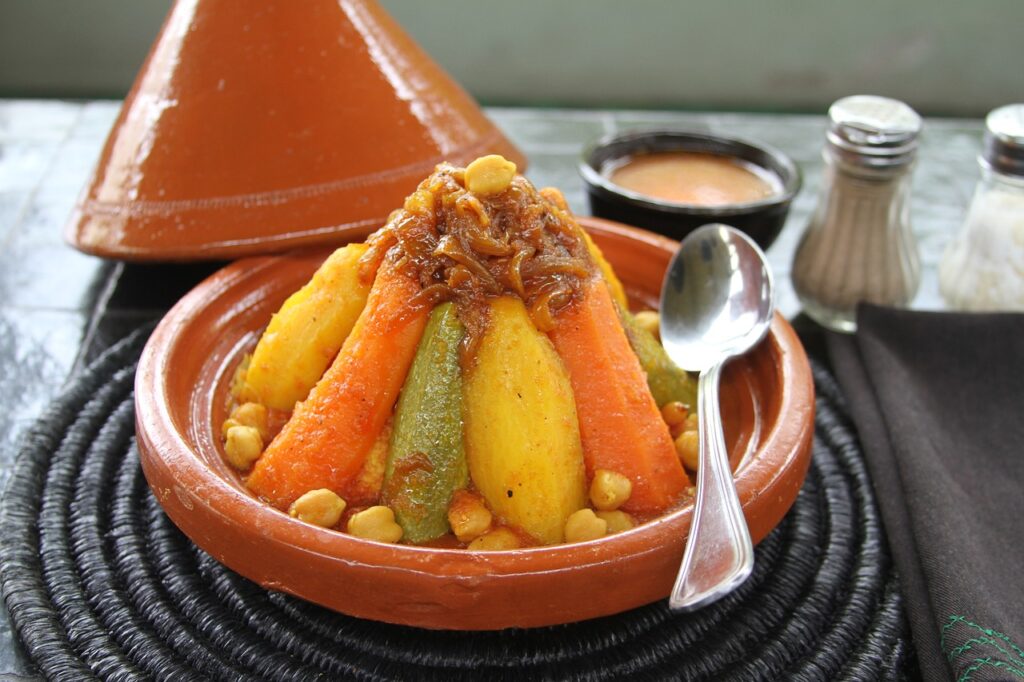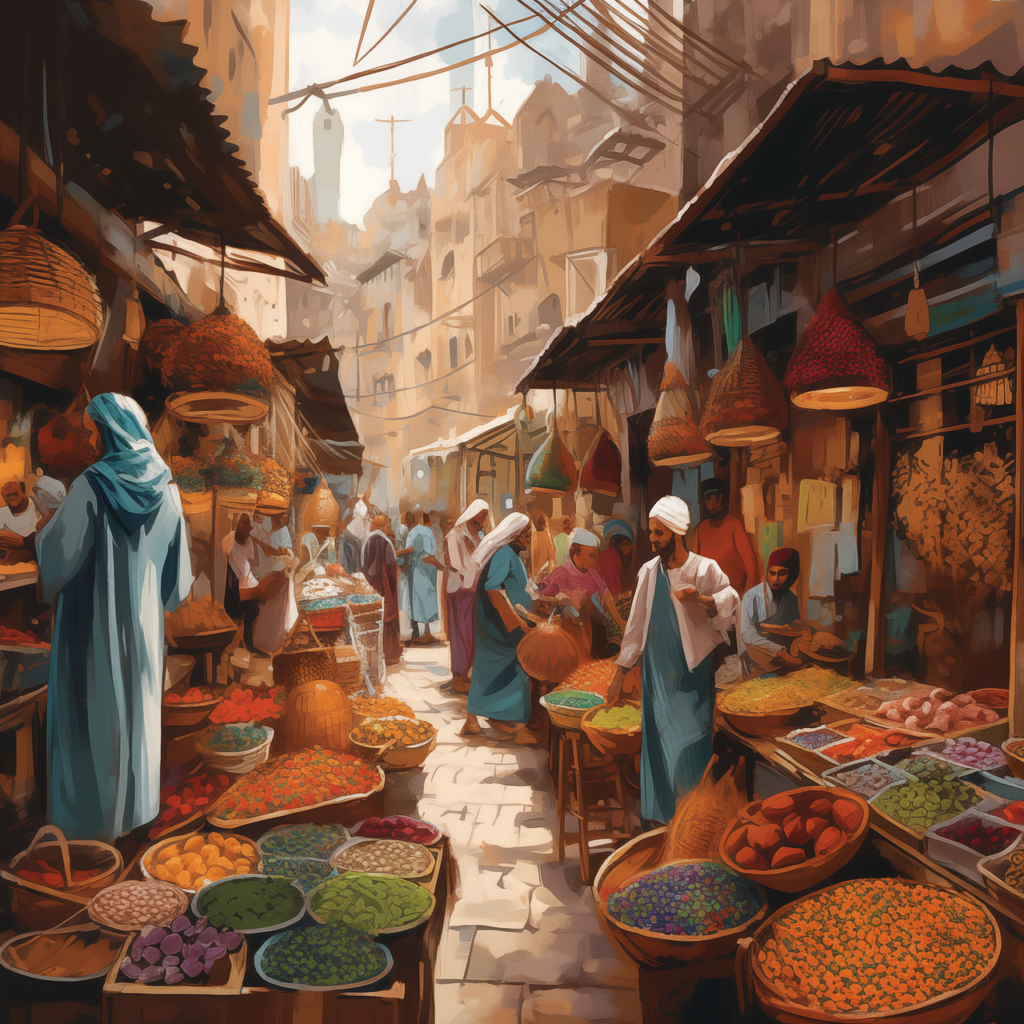Moroccan tea culture is a centuries-old tradition that transcends mere refreshment. It embodies hospitality, social etiquette, and national identity. Mint tea, known as “atay”, is the heart of this tradition and serves as a cultural symbol, especially in cities like Marrakech, where the sensory richness of Moroccan life is in full bloom. The ceremonial preparation and enjoyment of this tea offer a glimpse into the warmth and hospitality deeply ingrained in Moroccan society.
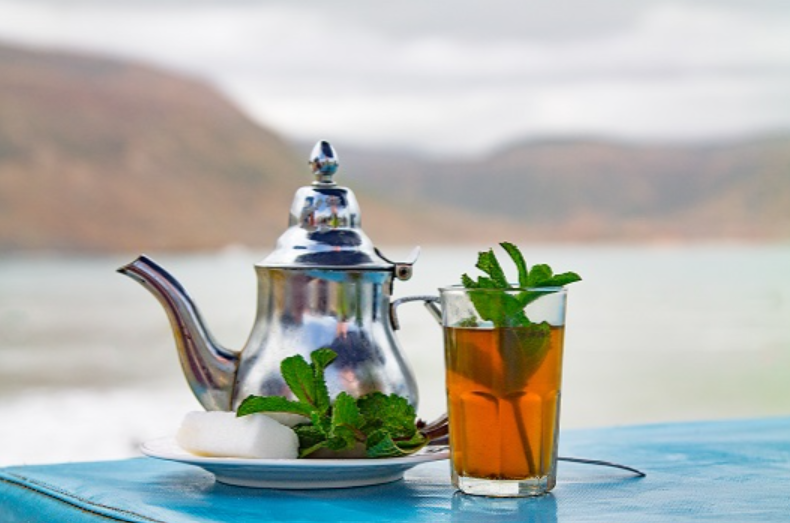
The Symbolism of Moroccan Mint Tea
Mint tea is much more than just a drink in Morocco. It represents hospitality, friendship, and relaxation, and is often considered an essential offering to guests. The preparation of the tea is a revered act, carried out with pride and precision, signaling the host’s attentiveness and respect for their visitors.
In cities like Marrakech, which has been a crossroads of diverse cultures and traders for centuries, mint tea also serves as a reflection of Morocco’s dynamic cultural fusion. Whether you’re in the bustling medina or the calm courtyard of a traditional riad, being offered mint tea is a near-universal experience. It symbolizes welcome and provides a moment of respite amidst the sensory overload that Marrakech offers.
The Intricate Preparation of Moroccan Mint Tea
The preparation of Moroccan mint tea is a detailed, almost theatrical process. Unlike teas in other parts of the world, where simplicity and quickness are prized, Moroccan mint tea is about process, ritual, and precision.
The ingredients for an authentic Moroccan tea typically include green tea (usually Chinese gunpowder tea), fresh mint, sugar, and boiling water. But the technique is what makes it exceptional. Here’s an insight into the traditional preparation:
- Rinsing the tea: A small quantity of green tea is placed in a teapot and rinsed with boiling water to remove its bitterness. The tea leaves are then drained, leaving behind a purer flavor.
- Mixing and boiling: Fresh mint, often a large bunch, is added to the tea along with sugar — and Moroccans tend to enjoy their tea very sweet. The mixture is left to steep for a few minutes, allowing the aromas to blend.
- Pouring: The pouring process is essential to both the preparation and presentation of the tea. The tea is poured from a height, creating a frothy top layer, a signature feature of Moroccan tea service. This frothing ensures proper mixing of the sugar and enhances the tea’s aroma.
- Tasting and Adjusting: Hosts often taste the tea before serving to ensure the balance of sweetness and strength is just right. This demonstrates care and attention to detail.
In Marrakech, the art of tea preparation is often passed down through generations, especially within family settings. In many homes, you’ll find ornate silver teapots and hand-crafted tea glasses, adding a layer of aesthetic beauty to the experience.
Tea in Daily Life and Social Settings
Mint tea is enjoyed multiple times throughout the day in Morocco, but its significance is most apparent in social settings. The moment tea is poured, it signifies a time to relax, connect, and converse. In bustling Marrakech, where life moves at a frenetic pace, tea is the pause that allows people to slow down, reflect, and share stories.
When visiting someone’s home in Morocco, especially in Marrakech, it is common to be served tea, regardless of the hour. Offering tea to guests is seen as a gesture of welcome and goodwill, and it’s not unusual for rounds of tea to stretch into hours of conversation. It’s a tradition that binds people together, creating a shared moment of intimacy and community.
In cafes across Marrakech, the tradition continues. Whether it’s a traditional tea house hidden in the narrow alleys of the medina or a more modern café overlooking Jemaa el-Fnaa, tea is the centerpiece of Moroccan social life. Locals and tourists alike gather around small tables, sipping tea as the world goes by.
The Social Ritual of Tea in Marrakech
Marrakech, known for its vibrant souks and historic architecture, offers a unique setting for tea culture. In the city’s main square, Jemaa el-Fnaa, vendors serve mint tea to travelers and locals alike, while storytellers and musicians entertain. This scene encapsulates the city’s tradition of blending the old with the new, where tea serves as a constant presence amidst the changing tides of time.
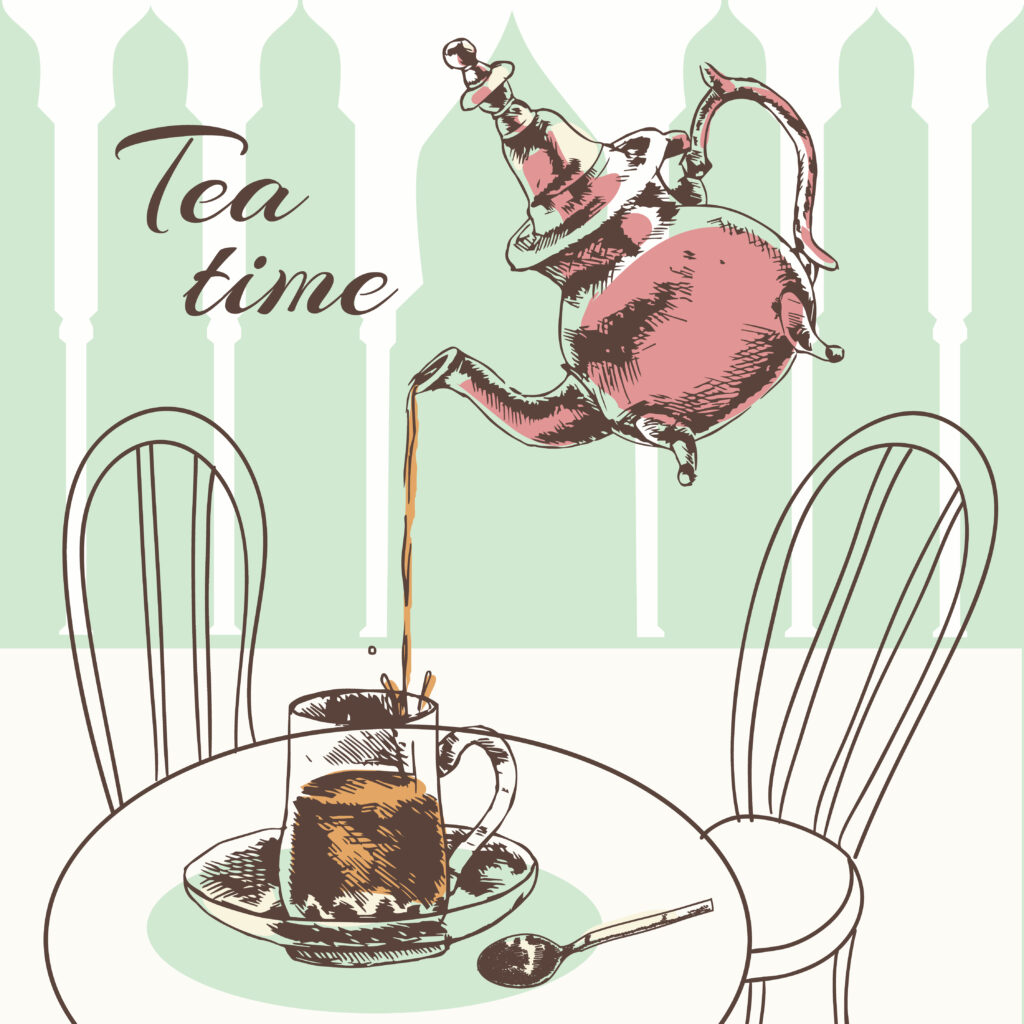
Tea houses in Marrakech, called “salons de thé,” often serve tea accompanied by small pastries or almond-based sweets, adding to the luxury of the experience. These tea houses offer a serene escape from the hustle of the streets, where patrons can enjoy the aromatic blend of mint and tea leaves in quiet contemplation. The atmosphere in these settings is often one of tranquility, even amid the vibrant energy of Marrakech.
The Role of Mint Tea in Special Occasions
Beyond daily life, mint tea plays an important role in celebrations and special occasions. At weddings, for example, serving mint tea is a way to honor the guests and to mark the significance of the gathering. It is also a staple during Ramadan, when it is commonly consumed to break the fast.
The act of sharing tea is deeply woven into the fabric of Moroccan life, a tradition that remains resilient even as modern influences permeate the country. The tradition of tea pouring from a height or the use of ornate silver teapots may be a familiar sight, but the respect for this custom is unwavering.
The Enduring Legacy of Moroccan Mint Tea Culture
In the fast-paced world we live in, Moroccan mint tea serves as a reminder to slow down and embrace the moment. It embodies a spirit of hospitality and togetherness that remains central to Moroccan identity, particularly in Marrakech, where the old world and the new collide in fascinating ways.
For visitors to this ancient city, taking the time to enjoy a cup of mint tea is not just a break from sightseeing—it’s an invitation into the heart of Moroccan culture. Through its unique preparation, distinct flavor, and central role in daily life, mint tea remains an enduring symbol of Morocco’s rich heritage, hospitality, and community.
